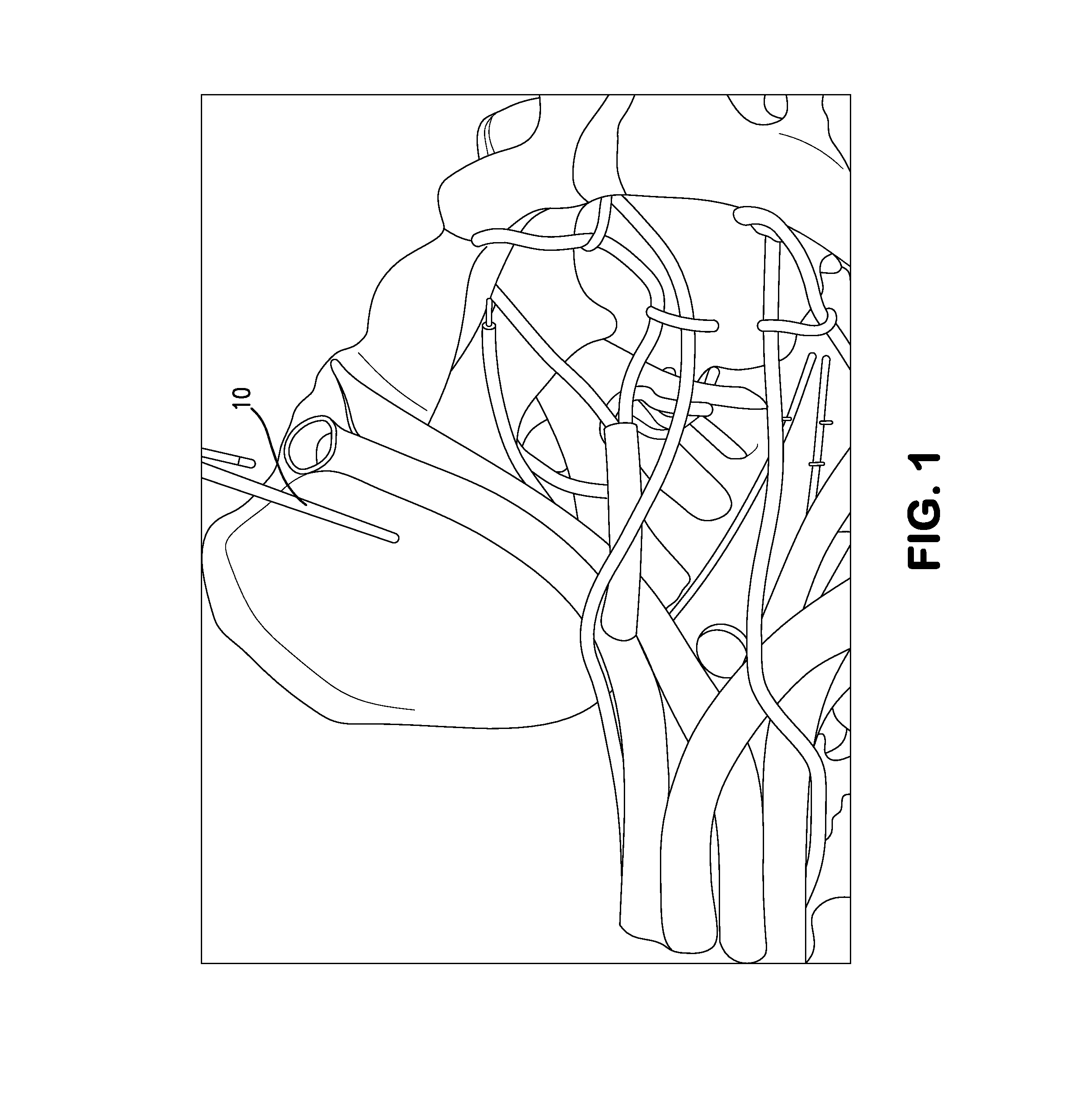System and method for implantation of lead and electrodes to the endopelvic portion of the pelvic nerves and connection cable for electrode with direction marker
a technology of pelvic nerve and pelvis, which is applied in the direction of internal electrodes, artificial respiration, therapy, etc., can solve the problems of increased bladder pressure, decreased urethra function, and adverse effects of pelvic floor disorders on the health and quality of life of millions of people, so as to prevent decubitus ulcers, minimize decubitus ulcers, and prevent decubitus ulcers
- Summary
- Abstract
- Description
- Claims
- Application Information
AI Technical Summary
Benefits of technology
Problems solved by technology
Method used
Image
Examples
Embodiment Construction
[0123]FIGS. 1-3 illustrate a model of the anatomical area of relevance to the present invention, with illustration of certain steps of the method of the present invention, while FIGS. 4-14 illustrate the tool and system of the present invention, all of which will be further described below.
[0124]I. System
[0125]FIGS. 4-10 show an implant system for treating pelvic floor dysfunctions in humans.
[0126]FIG. 4 shows a surgical system according to the invention which includes a curved tool 10 in a sleeve 23. Tool 10 has a handle portion 12 which can be curved or otherwise formed to be gripped by a surgeon or other user of the device. Tool 10 is further illustrated in FIG. 7. As shown, tool 10 can be formed from a cylindrical metal material and at one end forms curved grip portion 12 (segment A) and at the other end forms an engagement tip 14, which is formed at the end of a straight end or engagement segment 16 (segment 4, FIG. 7). Engagement tip 14 can be removable an...
PUM
 Login to View More
Login to View More Abstract
Description
Claims
Application Information
 Login to View More
Login to View More - R&D
- Intellectual Property
- Life Sciences
- Materials
- Tech Scout
- Unparalleled Data Quality
- Higher Quality Content
- 60% Fewer Hallucinations
Browse by: Latest US Patents, China's latest patents, Technical Efficacy Thesaurus, Application Domain, Technology Topic, Popular Technical Reports.
© 2025 PatSnap. All rights reserved.Legal|Privacy policy|Modern Slavery Act Transparency Statement|Sitemap|About US| Contact US: help@patsnap.com



